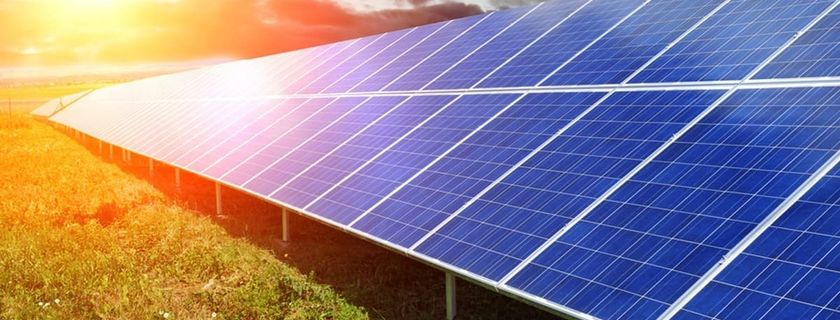
CIRCUSOL: Solar power business models towards a circular economy in Europe (PRESS RELEASE)
CIRCUSOL: Solar power business models towards a circular economy in…

Solar as a Service (SaaS) agreements are new and innovative. They are thereupon undoubtedly accompanied by the necessary questions and difficulties in practice, which may hinder the transition towards this circular and sustainable business model. Therefore, the following article discusses which contractual provisions should certainly be included in a SaaS agreement.
In a SaaS agreement, the provision of solar energy as a service is, of course, the main objective. This requires the provider to make sure that the solar panels are available and that the solar inverter, mounting system and monitoring system are installed.
Ensuring continuous solar energy provision also means that the system must be maintained. As a client is only interested in obtaining solar energy and as the provider remains the owner of the PV system, it is the provider who is responsible for its maintenance. Usually, a maintenance program is drawn up for this purpose. This maintenance program ensures that the PV system can be used for the entire duration of the agreement.
In addition, the service provider is also responsible for troubleshooting, repairing and replacing defective or worn parts. For this purpose, it is also important that the provider has sufficient spare parts in stock.
Naturally, the contracting parties can lay down a number of conditions in the agreement that must be fulfilled in order to achieve the result (i.e. the provision of solar energy). These are usually referred to as output specifications. These specifications can relate to the function, design, appearance, quality, durability, etc. of PV systems.
It is also recommended to describe the provision of the services in detail. A Service Level Agreement (SLA) can be used for this, which can be added as an appendix to the main SaaS agreement. In an SLA, the parties specify in detail how the services are to be provided, the level of service to be achieved and the means of measuring these levels.
An SLA generally includes Key Performance Indicators (KPIs). These are measurable objectives that the service provider must pursue in order to ensure the proper provision of the service. In the PV sector, a distinction is made between PV system KPIs and Operation & Maintenance (O&M) KPIs. PV system KPIs are quantitative indicators and reflect the performance of the PV system. This includes among others the performance ratio and expected yield. The O&M KPIs, on the other hand, reflect the O&M performance arranged by the service provider. Here, the focus lies more on the intervention time, response time and resolution time. For example, in the event of a defect, the service provider may commit himself to carry out a repair or replacement within 3 business days.
The practice has shown that the parties negotiate this SLA in-depth with the KPIs involved because failure to reach the required service levels often result in measures that must be taken in the disadvantage of the service provider. The consequences of this non-compliance should be regulated in detail in the SLA. A distinction can be made between different measures:
Where the provider is responsible for providing solar energy via the PV system on the roof of the user, the user must periodically pay a fee to the provider for this service. This compensation enables the service provider to recover, within the duration of the contract, his purchase of and investment in the goods made available (i.e. the PV system).
But what happens if the user fails to meet his obligation by his fault and stops paying? What remedies does the provider have? Under Belgian contract law, in the event of non-compliance with an obligation expressed in monetary terms, only performance in kind is possible. Delays in payment are punishable by the granting of moratory interests, which start to run after notice of default. The compensation in this case, therefore, consists of the periodical compensation, plus the legal interest.
In addition, the contract may include a clause obliging the user to pay compensation to the provider in the event of non-payment. This is the so-called damages clause. The compensation shall be fixed in advance by the parties in a lump-sum manner to ensure that the existence and extent of the damage is not disputed at a later stage. For example, it can be agreed that the user must pay a fee corresponding to 10% of the unpaid amount.
In the event that the user unmistakably ceases to pay, it is recommended that the contract also contains an explicit cancellation clause. This clause allows the provider, in case of breach of contract, to unilaterally and without judicial intervention dissolve the contract, after giving notice of default. The dissolution may be accompanied by the award of an amount of compensation which may be fixed in advance. This compensation allows the provider to reimburse his costs.
SaaS agreements are often concluded for a fixed, long period of time and may at some point no longer be interesting for one of the contracting parties. For instance, this can be the case when the user sells his house and the new owner does not want to take over the SaaS agreement. It is, therefore, a good idea for the parties to anticipate the future and to add a unilateral termination clause to the agreement. A termination clause is not a sanction, as a result of which the terminator is not entitled to additional compensation. On the contrary, the terminating party will often have to pay a severance payment to the terminated party. If this is applied to the case where the user terminates the contract because he moves, the provider will have his costs reimbursed (including the costs of removing the PV installation from the roof).
At the end of the life of the PV modules or at the end of the SaaS agreement, the PV system shall be taken back. The SaaS agreement should express that this is done at the expense of the provider (since the provider is still the owner of the system). However, such an obligation to take back the product in no way guarantees that the service provider will repurpose the product in a sustainable way. Therefore, the parties should include a clause in the SaaS agreement in which the service provider guarantees that he or a third party will reuse the PV installation (or components thereof) in a high-quality manner in order to guarantee the circularity of the system. Or, if the PV system or components are no longer suitable for reuse, they will be sent for proper recycling. If this is only possible or appropriate for a part of the installation, the parties can also agree on a percentage that the service provider must achieve in terms of reuse or recycling.
In addition, the parties can also stipulate that a material passport will be used. Given the fact that the material information needs to be provided by the manufacturer, parties can stipulate that they add the use phase information to the passport. This information provides more details about the installation, production, maintenance, accidents (storm, fire, etc.) This additional kind of information is useful for the reuse or recycling decision.
Disclaimer: This article is based on the Flemish/Belgian legislation. Nevertheless, similar legal principles can often be found in other civil law countries.
ABOUT THE AUTHOR: Emilie Verbeure obtained her law degree at the KU Leuven with the specialization in International & European law. She then proceeded with the master’s studies in Environmental Sciences at the University of Antwerp where she conducted research on the legal considerations, possibilities and barriers for PSS in the photovoltaic sector made in the context of the European project CIRCUSOL, in collaboration with VITO. She currently works as a lawyer at Flemish Energy Agency.
DE VULDER, K. and SCHEERLINCK, K., ‘De bijzondere sanctionering van de contractuele wanprestatie in service level agreements’ in SWINNEN, K., MUYLLE, M., BELLINCK, L., BRULEZ, P., DEMEYERE, S., DE VULDER, K., SCHEELINCK, K. and VERKEMPINCK, B. (eds.), De contractuele fout, Brugge, die Keure, 2019, 65–83.
DELPORTE, T., DE MEYER, J., DE MUYTER, J., HELLEMANS, L., VAN GARSSE, S. and WAUTERS, R., ‘Outputspecificaties. Een leidraad voor opdrachtgevers en opdrachtnemers van PPS-contracten’, Brussel, 2009.
SOLARPOWER EUROPE, ‘Operation & Maintenance. Best Practices Guidelines / Version 3.0’, 2018.
STIJNS, S., Leerboek verbintenissenrecht Boek 1 in Leerboeken verbintenissenrecht, Brugge, Die Keure, 2005, 559 p.
TANGHE, T., ‘Ontbindingsclausules’ in BALLON, G.-L., DE DECKER, H., SAGAERT, V., TERRYN, E., TILLEMAN, B. and VERBEKE, A.-L. (eds.), Gemeenrechtelijke clausules, vol. I en II, Antwerpen, Intersentia, 2013, 1557–1576.
VAN VAERENBERGH, A. and LEYMAN, F., ‘“ Product als dienst ” - een stap in de richting van een circulaire economie’, MER 2019, 20–30.

CIRCUSOL: Solar power business models towards a circular economy in…